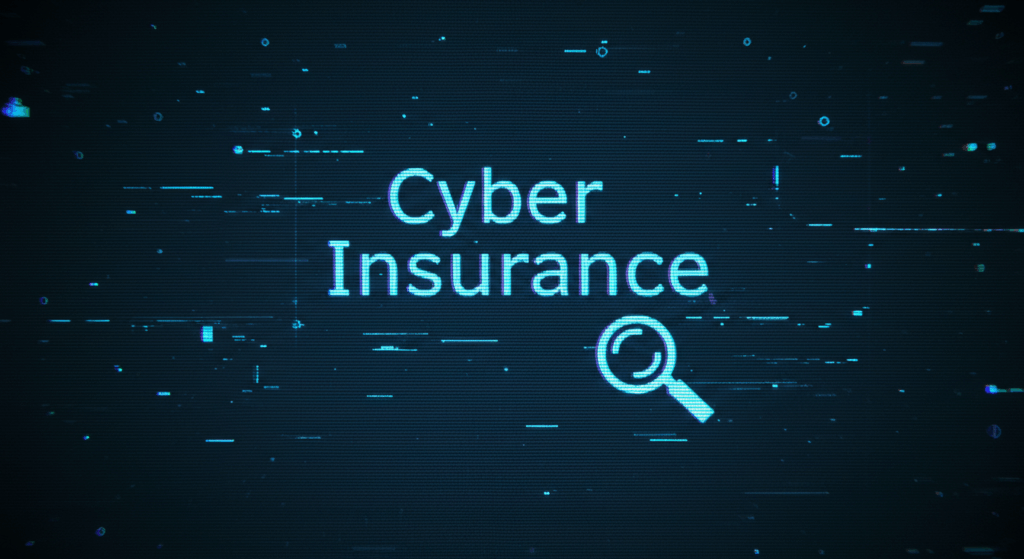Your bakery’s online order system goes dark. Customers rage on social media. Then the email arrives: “Pay $75,000 or we leak 12,000 credit card numbers.” For Maria, a Florida pastry shop owner, this wasn’t hypothetical – it nearly ended her 15-year business. Her story exposes a brutal truth: 61% of small businesses hit by cyberattacks close within a year. Yet when I asked if she had cyber insurance, she admitted: “I didn’t think my coffee budget business needed it.”
As someone who’s helped 140+ small businesses navigate digital crises, I’ve seen how the right coverage transforms disasters into recoverable setbacks. Let’s break down exactly what you need to know – no sugar-coating.

What Is Cyber Insurance? (And Why It’s Not Optional)
Cyber insurance covers financial losses when digital systems fail or get compromised. Unlike general liability (which handles slips or property damage), it specifically protects against:
- Data theft
- Ransomware attacks
- Business downtime
- Legal claims from customers
Reality check:
- 43% of attacks target small businesses
- Average recovery costs hit $164,000 per incident
- Only 47% of SMBs have coverage
The 3 Core Coverage Categories
Cyber policies typically include these protection layers:
| Category | What It Covers | Real-World Example |
|---|---|---|
| First-Party Costs | Your direct expenses (data recovery, downtime losses, notification fees) | Restaurant pays $28K to restore systems after ransomware locks POS terminals |
| Third-Party Claims | Lawsuits/fines from affected customers or regulators | Accounting firm pays $40K GDPR fine after client data leaks from unencrypted laptop |
| Cyber Extortion | Ransom negotiation/payment services | Manufacturer pays $50K Bitcoin ransom to unlock factory control systems (not recommended) |
What Is the Most Common Cyber Insurance Claim?
Ransomware attacks dominate 43% of claims. Hackers lock critical systems and demand payment to restore access.
Example: A Michigan HVAC company’s scheduling software got encrypted in peak summer. Hackers demanded $35,000. The business lost $22,000 daily during the 3-day outage. Their cyber insurance covered ransom negotiation fees, system restoration, and lost income.
How Do I Know If I Need Cyber Insurance?
Ask yourself these 5 questions:
- Do you store customer data? (Emails, payments, addresses)
- Do employees use work devices remotely?
- Could you survive 2+ weeks of downtime?
- Do you accept online payments?
- Are you required to comply with regulations? (HIPAA, PCI-DSS, etc.)
>2 “yes” answers? Coverage is critical.
How Much Cyber Insurance Do I Need?
Calculate based on:
- Data sensitivity: Healthcare/law firms need more coverage than retailers
- Revenue exposure: 3 months of gross income is a common benchmark
- Industry standards: Most SMBs carry $500K–$3 million policies
Scenario: A $950K-revenue marketing agency stores client websites and payment details. They chose $1 million coverage ($4,200/year) – enough to cover 90 days of operations if systems go offline.
What Questions Should I Ask About Cyber Insurance?
Demand clarity on these 7 issues before signing:
- “Are social engineering scams covered?” (e.g., fake vendor invoices)
- “What security measures do we need to maintain?” (MFA? Backups?)
- “What’s excluded for remote workers using personal devices?”
- “Do you cover cryptocurrency ransom payments?”
- “What’s your average claims response time?”
- “Is business interruption calculated based on gross profit or revenue?”
- “Are regulatory fines included in third-party coverage?”
What Are the Risks of Cyber Insurance?
Common pitfalls include:
- Claim denials for “negligence” (e.g., unpatched software)
- Coverage gaps for certain attacks (like nation-state hacks)
- Steep premium hikes after claims
- Complex documentation requirements during crises
- Exclusions for “known vulnerabilities” present before policy start
Tip: Always request a copy of all policy exclusions in writing.
Why Is It Difficult to Get Cyber Insurance?
Insurers have tightened requirements because:
- Rising claims frequency (up 300% since 2020)
- Underwriters demand proof of security like MFA and employee training
- Small businesses often lack IT documentation insurers require
How Is Cyber Insurance Calculated?
Your premium depends on:
| Factor | Low Risk | High Risk | Premium Impact |
|---|---|---|---|
| Industry | Retail | Healthcare/Legal | +20-40% |
| Data Stored | Basic contact info | Medical records/SSNs | +25-60% |
| Revenue | <$500K | >$2M | +200-400% |
| Security | MFA + encrypted backups | No recent updates/employee training | +50-100% |
Is Cyber Insurance Worth It?
The case FOR ✅:
- Covers catastrophic costs that could bankrupt you
- Provides 24/7 access to breach coaches and legal teams
- Meets client contract requirements (common for gov’t contractors)
- Peace of mind knowing you can recover
The case AGAINST ❌:
- Premiums increased 28% in 2023
- Doesn’t prevent attacks – you still need security
- Complex claims processes require meticulous documentation
Verdict: If you handle sensitive data or rely on digital systems, it’s essential.
Is Cyber Insurance Compulsory?
No federal law requires it, but:
- Some states mandate coverage for specific industries (e.g., NY financial services)
- Many client contracts now require $1M+ cyber liability policies
- Industry regulations (like HIPAA) effectively necessitate coverage
What’s the Difference: Cyber Insurance vs. Cyber Liability Insurance?
| Feature | Cyber Insurance | Cyber Liability Insurance |
|---|---|---|
| Scope | Comprehensive (1st + 3rd party) | Only 3rd-party lawsuits/fines |
| Downtime Coverage | Yes | No |
| Ransomware Help | Yes | No |
| Best For | Full protection | Basic compliance needs |
Note: Most “cyber insurance” policies include liability coverage.
Does My Business Need Cyber Insurance?
Final Checklist:
✔️ You store customer/employee data
✔️ You depend on digital systems for daily operations
✔️ A 3-week outage would cripple your finances
✔️ You handle payments or sensitive information
If any apply, coverage isn’t optional – it’s business survival.
Your 4-Step Action Plan
- Audit your risk: Use the FCC’s free Cyber Planner
- Lock security basics: Enable MFA, train staff, encrypt data
- Get quotes: Compare policies at CyberPolicy
- Review annually: Update coverage when adding services/staff
Maria’s turning point: After her bakery attack, she bought a $300K policy ($1,400/year). When hackers struck again 8 months later, her insurer covered forensic analysis ($19K) and downtime losses ($38K). “This policy saved our business twice,” she told me last month.
Don’t wait for the attack to test your readiness.
Still hesitant? Ask below: What’s your #1 cyber insurance concern? I’ll respond personally.
Sources:
- IBM Cost of a Data Breach Report
- FBI Internet Crime Report
- National Association of Insurance Commissioners
- U.S. Small Business Administration Cyber Guide
Want to read about Kaspersky Antivirus Free to protect yourself against online predators Click here
